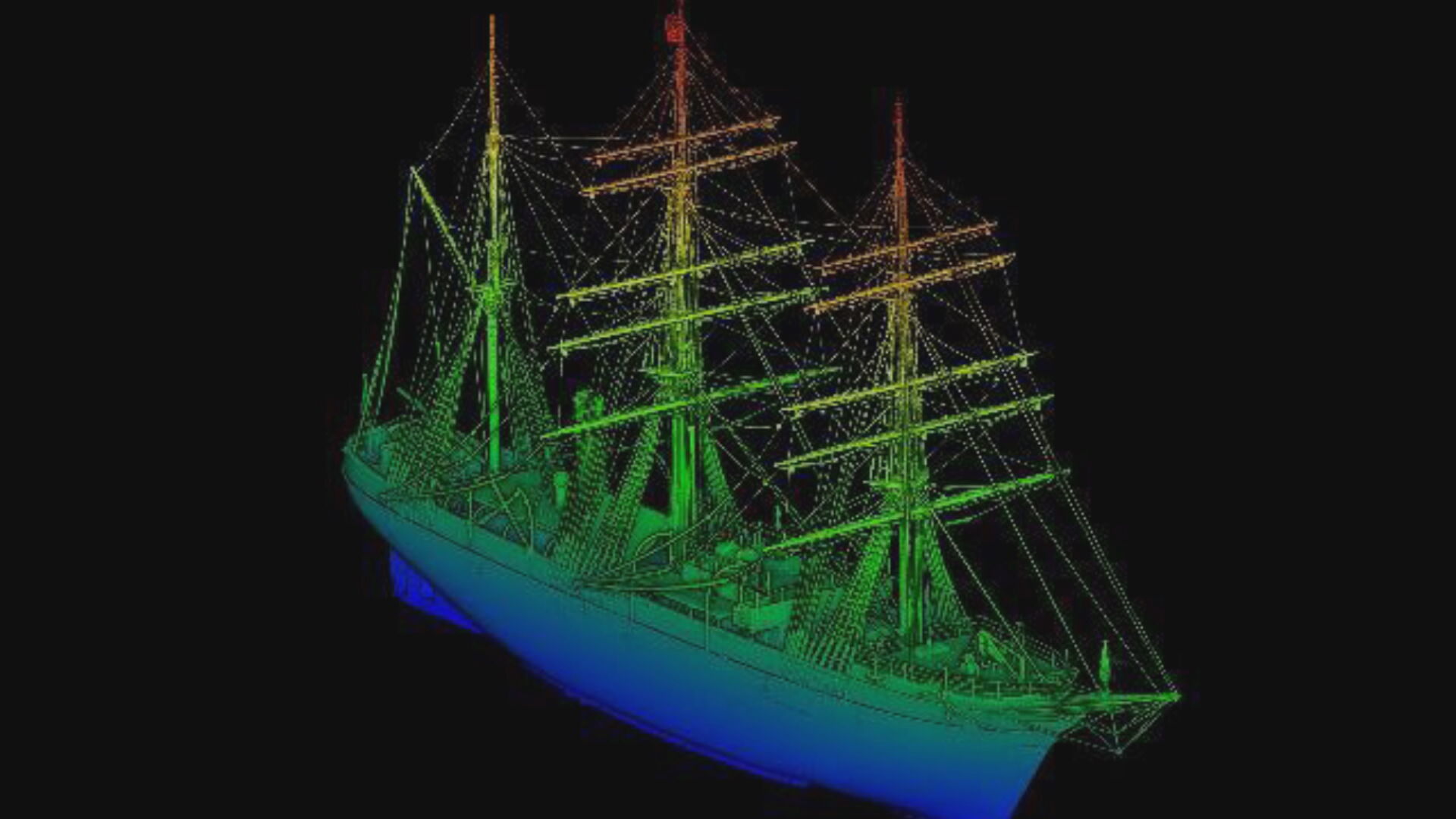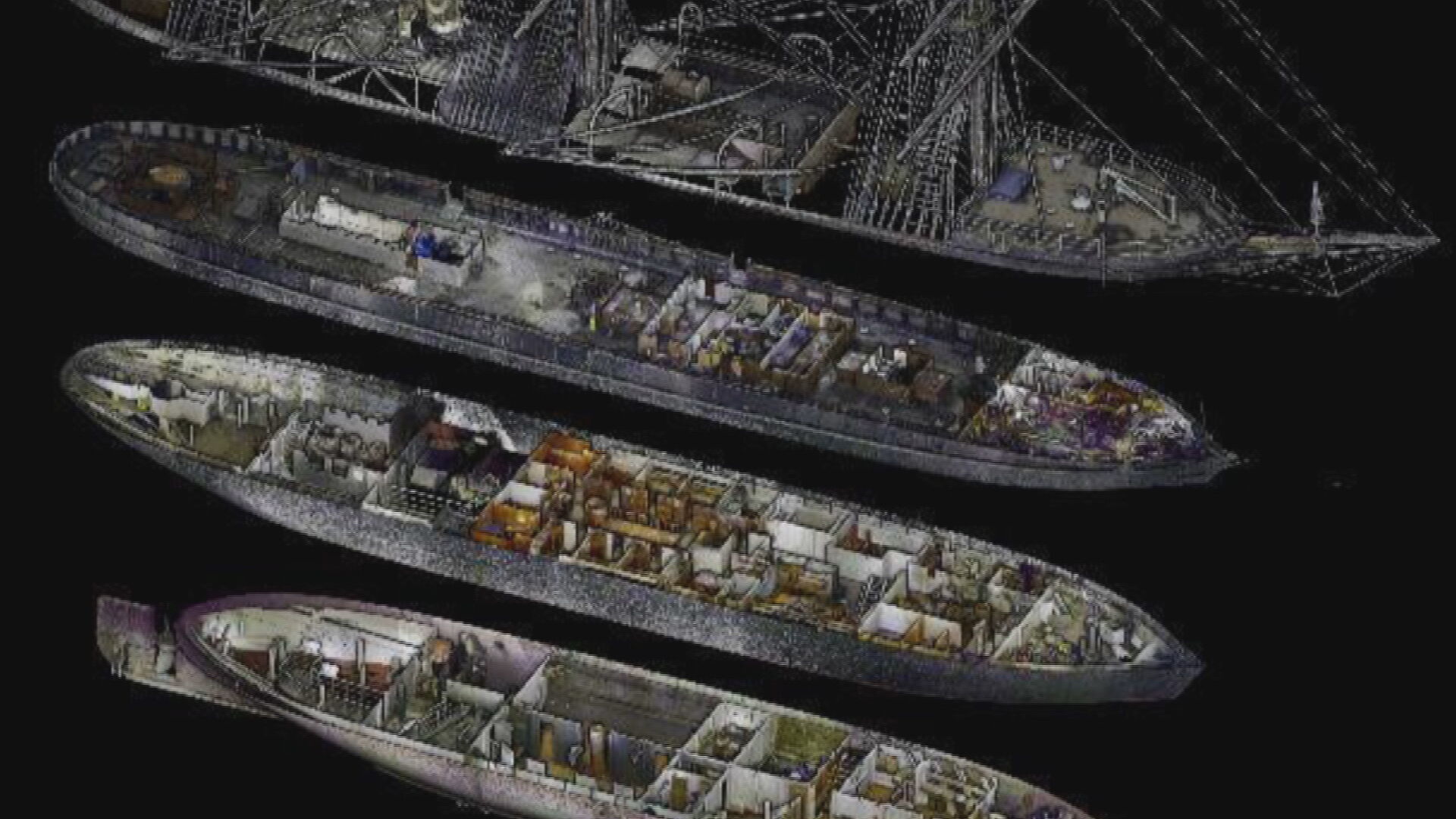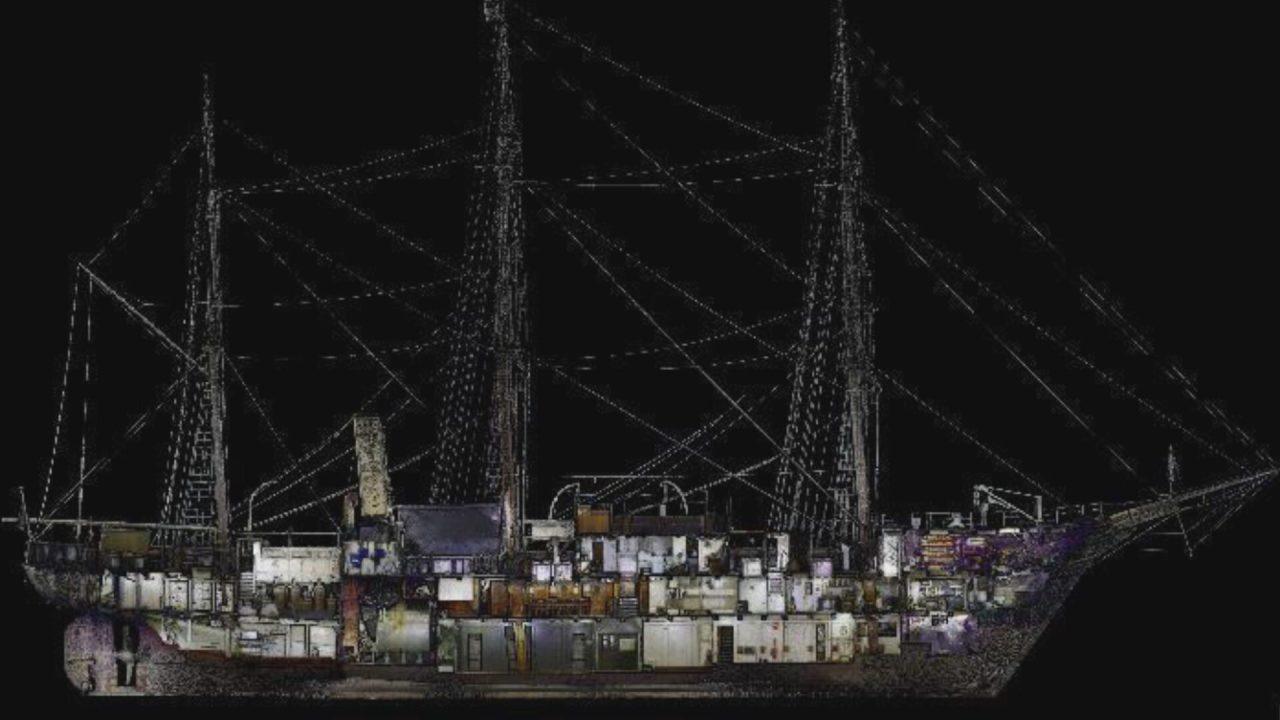A state-of-the-art “digital twin” of the RRS Discovery aims to uncover new stories and reveal more secrets from the famous ship’s past.
The history of the pioneering research vessel that first took explorers Robert Falcon Scott and Ernest Shackleton to Antarctica, is already well documented.
But STV News has been given an exclusive first look at the work of a research team from the University of South Hampton who have created a highly accurate 3D representation of the entire ship in hopes to deliver new insights into how it was built and the story of daily life on board.
These images are the most detailed scans of the Discovery to date, mapping every inch and measuring the toll the years have taken.
 University of Southhampton/Dundee Heritage Trust
University of Southhampton/Dundee Heritage TrustIt is believed they could play a crucial role in the vital restoration work on the vessel and provide visitors with virtual access to otherwise off-limits spaces.
“This digital twin provides an amazing opportunity for more people to explore this fascinating ship and learn about its history in a completely new way—including areas of the ship that cannot be accessed by the public,” said Dr Michael Grant, from Coastal and Offshore Archaeological Research Services at the University of Southampton.
“Through this, we can obtain even greater insights into the lives of the people who explored the Antarctic over a century ago, providing the foundation for much of the ocean and climate science being undertaken today.”
The work is part of a project to digitise the Discovery Collections, creating highly detailed 3D scans of historic objects associated with the Discovery’s Antarctic expeditions between 1901 and 1931.
“With the rise of new technologies, such as laser scanners and UAVs, we can now create highly accurate digital twins,” explained Dr Felix Pedrotti, from the Southampton Marine and Maritime Institute at the University of Southampton.
“These digital replicas offer invaluable insights into the RRS Discovery, including its structures and layouts.”
 University of Southhampton/Dundee Heritage Trust
University of Southhampton/Dundee Heritage TrustThe RRS Discovery was built in Dundee and launched in 1901. It was the first ship in the world purposely built for scientific research in ice-packed Antarctica.
It is the sole surviving UK ship from the Heroic Age of Antarctic Exploration, which lasted between the end of the 19th century and the Shackleton-Rowett Expedition of 1921–1922.
“The results of the scanning work we have done allow us to explore the ship and its people in a way that has never been done before, to study the entire ship in millimetric detail, informing our understanding of its preservation and allowing us to ask questions about its design, use, and the modifications made throughout its life,” said Dr Jack Pink, from the Centre for Maritime Archaeology at the University of Southampton.
“We can now explore how different crews lived and worked on the ship and understand the work they did through an entirely new perspective—that of the ship itself.”
 STV News
STV NewsThe project provides essential information for the Dundee Heritage Trust (DHT) team as they progress the restoration of the ship.
Mel Ruth Oakley, Curator at DHT, said the opportunity to take part in this project was invaluable.
“As we embark on a major conservation project, this digital scan of the ship will provide us with a detailed record of the ship before the work.
“This is incredibly helpful in determining the conservation work we undertake.
“The scan can also be used by researchers and enjoyed by our visitors to provide a virtual tour of the ship.”
Follow STV News on WhatsApp
Scan the QR code on your mobile device for all the latest news from around the country
























